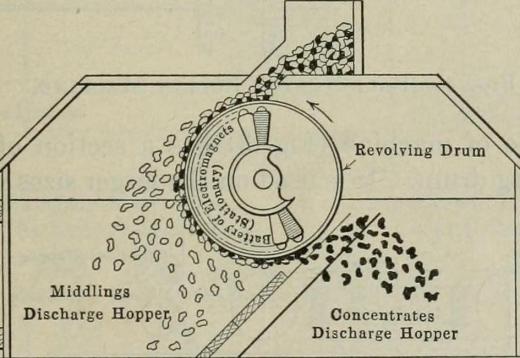Magnetic separators are devices which are designed to assist with the purification and separation of process streams. They are used in industries like mining, and smaller versions are utilized in scientific labs to process some types of samples. Numerous companies make magnetic separators for various applications, and there are several different styles available for people to choose from, depending on the application and their needs. This type of equipment is available from companies which specialize in industrial processing equipment, and it can also be ordered directly from manufacturers, in cases where people have customized needs.
A basic magnetic separator consists of a magnet of some kind. As materials are passed below, over, through, or around the magnetic separator, it attracts undesirable impurities, pulling them out and cleaning the process stream. Magnetic separators may be ferromagnetic or paramagnetic, depending on the needs, and in some cases materials will be passed through both types of magnetic separators. These devices can vary in size from tabletop separators used in labs to massive drums utilized in recycling facilities.

One of the common uses for a magnetic separator is the removal of so-called tramp metal, undesirable iron which can foul a process stream. Magnetic separators are also used to remove materials which could damage or foul equipment, in a pre-processing step. Separators can also be used to sort various types of metal, with a series of separators varying in intensity to pull out strongly and weakly magnetic materials at different times.
Some design styles include overhead magnets, which hover over a process stream, and magnetic plates, which allow materials to flow over the plate while pulling out magnetic materials. Magnetic separators can also take the form of drums, grates, and stacked drawers which material flows through. In the laboratory, a magnetic separator may be designed to accommodate flasks and other containers used to hold material in the lab, to reduce the risk of cross-contamination.
Like other devices used in processing materials, a magnetic separator must be properly maintained and operated as directed in order to be effective. Maintenance includes clearing the separator to remove magnetic materials it has collected, along with periodically oiling moving parts. In the case of electromagnets, it is also necessary to make sure that emergency shutoffs and other safety features are in operational condition, so that the magnet can be turned off in the event that a problem develops on the production line.
Ever since she began contributing to the site several years ago, Mary has embraced the exciting challenge of being a About Mechanics researcher and writer. Mary has a liberal arts degree from Goddard College and spends her free time reading, cooking, and exploring the great outdoors.

